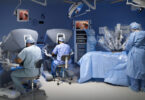[et_pb_section bb_built=”1″][et_pb_row][et_pb_column type=”4_4″][et_pb_text _builder_version=”3.13.1″]
Bacterial resistance is the ability of bacteria to withstand the effects of antibiotics or biocides consigned to eliminate or control them.
On the other hand, antibiotics are powerful drugs that fight bacterial infections, act by eliminating bacteria or preventing them from reproducing, making the body’s natural defenses sufficient, however, some have become resistant to these drugs. Some types of bacteria resist the effect of antibiotics, so they represent a great challenge for doctors. A group of researchers have managed to design molecules that directly affect the cells that make these bacteria invulnerable to antibiotics. Their correct use can save lives. Antibiotic resistance occurs when bacteria are altered in a way that reduces the effectiveness of medicines, chemicals or other agents designed to cure or prevent infections. The bacteria survive and continue reproducing and causing deterioration to the organism.
In this way, bacteria can add an arsenal of resistance to antibiotics and end up being very strong to a wide range of these, as is the case of the multi-resistant strain of a staphylococcus, called Staphylococcus aurius, which causes havoc in many rooms of surgery.
This occurs when the bacteria are transformed and become capable of resisting the effects of an antibiotic. The use of antibiotics can lead to resistance. They can also cause infections that certain antibiotics can not cure.
These and other innovations are now possible in Pharmamedic.
[/et_pb_text][/et_pb_column][/et_pb_row][/et_pb_section]








